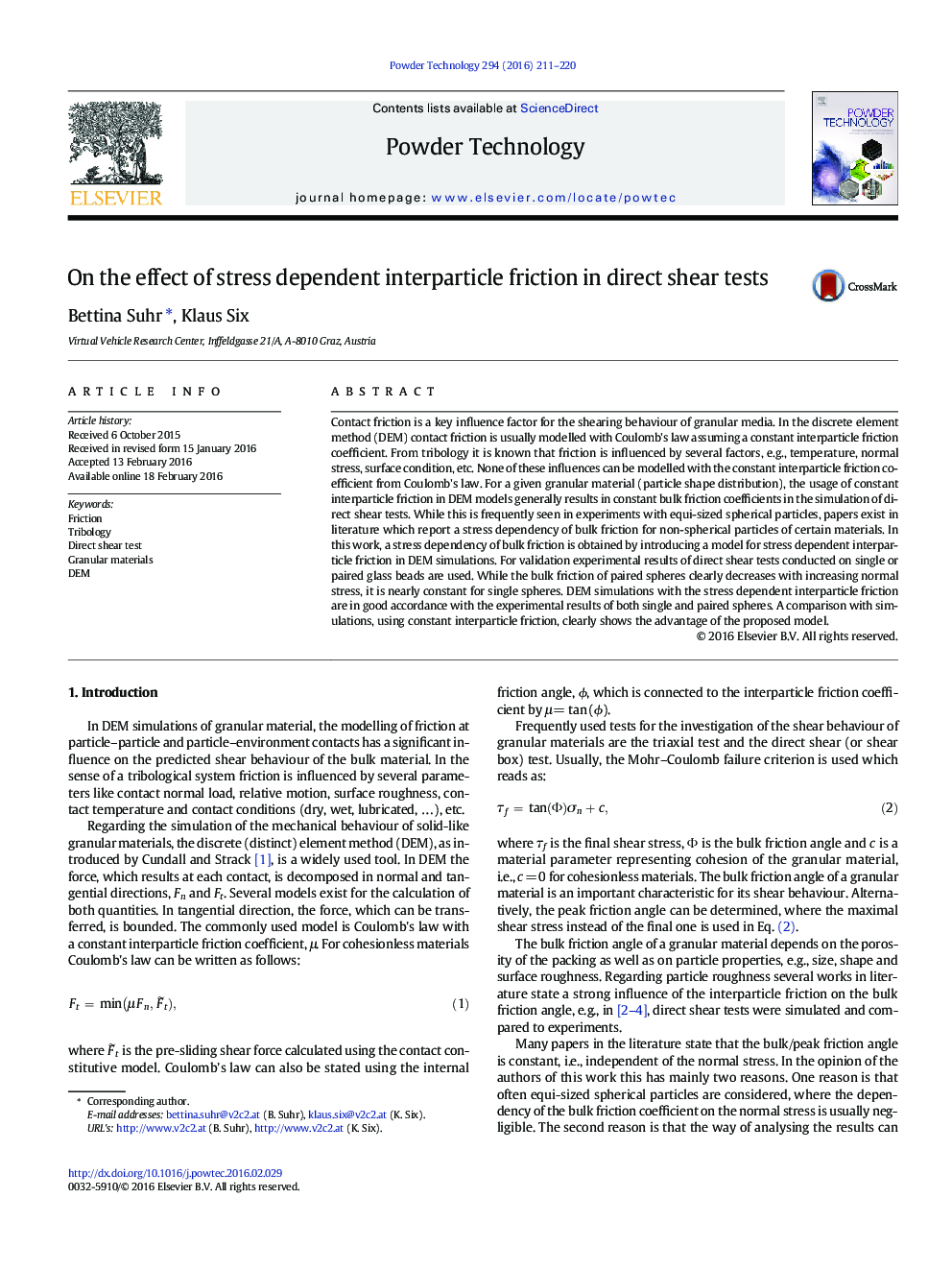| کد مقاله | کد نشریه | سال انتشار | مقاله انگلیسی | نسخه تمام متن |
|---|---|---|---|---|
| 235062 | 465627 | 2016 | 10 صفحه PDF | دانلود رایگان |
• Shear tests on non-equi-sized particles show normal stress dependent bulk friction.
• In DEM friction is modelled with Coulomb's law and constant friction coefficient.
• Tribologically friction coefficient is not constant, e.g. normal load dependent.
• Contact model with normal load dependent friction coefficient is introduced in DEM.
• Shear test simulation results show good agreement with experiments.
Contact friction is a key influence factor for the shearing behaviour of granular media. In the discrete element method (DEM) contact friction is usually modelled with Coulomb's law assuming a constant interparticle friction coefficient. From tribology it is known that friction is influenced by several factors, e.g., temperature, normal stress, surface condition, etc. None of these influences can be modelled with the constant interparticle friction coefficient from Coulomb's law. For a given granular material (particle shape distribution), the usage of constant interparticle friction in DEM models generally results in constant bulk friction coefficients in the simulation of direct shear tests. While this is frequently seen in experiments with equi-sized spherical particles, papers exist in literature which report a stress dependency of bulk friction for non-spherical particles of certain materials. In this work, a stress dependency of bulk friction is obtained by introducing a model for stress dependent interparticle friction in DEM simulations. For validation experimental results of direct shear tests conducted on single or paired glass beads are used. While the bulk friction of paired spheres clearly decreases with increasing normal stress, it is nearly constant for single spheres. DEM simulations with the stress dependent interparticle friction are in good accordance with the experimental results of both single and paired spheres. A comparison with simulations, using constant interparticle friction, clearly shows the advantage of the proposed model.
Figure optionsDownload as PowerPoint slide
Journal: Powder Technology - Volume 294, June 2016, Pages 211–220
